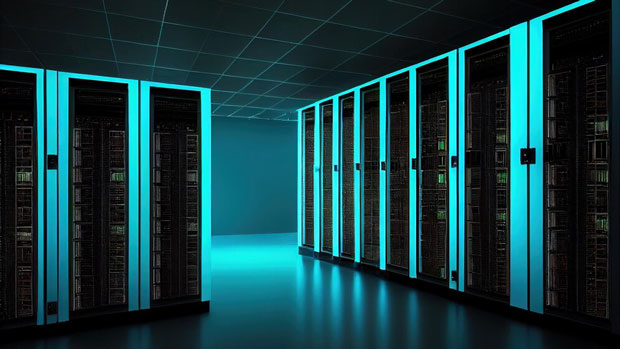SEO data collection is a critical process for digital marketing strategies, and choosing the right proxy provider can make all the difference. Two popular options are Luminati proxies and PYPROXY, both offering unique advantages for SEO data scraping. Luminati proxies is a more affordable and customizable solution, making it a strong choice for small businesses or individuals who need a tailored experience. On the other hand, PyProxy offer a robust, enterprise-grade network with large-scale coverage, providing stability and reliability for high-demand SEO data scraping tasks. This article will explore the practical applications, features, and differences between Luminati proxies and PyProxy in the context of SEO data collection. Introduction to SEO Data Collection and the Role of ProxiesSEO data collection involves scraping search engine result pages (SERPs), competitor data, keyword rankings, and other relevant metrics to monitor and improve website performance. However, frequent requests to search engines can lead to IP blocking or rate-limiting, which makes proxies essential for anonymous browsing and uninterrupted data collection.Proxies serve as intermediaries between the user and the website, masking the user's IP address, and making it appear as if the request is coming from a different location. This allows SEO professionals to collect data at scale, without getting blocked. When comparing Luminati proxies and PyProxy, it's crucial to understand the features, pricing, and scalability of each solution.Luminati proxies: A Cost-Effective, Customizable SolutionLuminati proxies is a flexible proxy service that offers both residential and data center proxies. It is often chosen by smaller businesses, freelancers, and SEO enthusiasts who need a cost-effective solution without sacrificing functionality. Let's break down its strengths in SEO data collection:1. Customization and FlexibilityLuminati proxies stands out for its customizable settings. It allows users to tailor the proxy configuration based on their specific needs. Whether you need to rotate IPs frequently, change locations, or use custom proxy lists, Luminati proxies provides a wide array of options for fine-tuning the setup. This is especially valuable for SEO data collection, as it helps avoid detection by search engines.2. Affordable PricingOne of the most appealing aspects of Luminati proxies is its pricing model. Compared to PyProxy, Luminati proxies is a more budget-friendly option, making it ideal for startups, small agencies, and individual users who don't have large-scale scraping requirements. This can help reduce the operational cost of SEO campaigns while still providing reliable data.3. Scalability LimitationsWhile Luminati proxies offers great flexibility and affordability, it may not be the best choice for large-scale SEO data collection. The number of proxies available and the performance at scale can become limiting factors. For users with small to medium-sized SEO projects, Luminati proxies works well, but for enterprises looking for large datasets or high-frequency scraping, the service might fall short.PyProxy: A Comprehensive, Enterprise-Level SolutionPyProxy, now rebranded as Bright Data, is a premium proxy provider known for its enterprise-grade network. It's designed for large-scale SEO data collection, offering a robust and reliable infrastructure. Here are the key features that make PyProxy a popular choice among SEO professionals:1. Vast Proxy NetworkPyProxy's network spans over 72 million IPs across the globe, offering an unmatched level of coverage. This extensive network provides access to residential, mobile, and data center proxies, ensuring that users can collect data from any region without worrying about IP blocks or rate limits. For large enterprises involved in SEO research across multiple markets, this vast network is a game-changer.2. High Reliability and PerformancePyProxy's network is built for high-demand use cases, offering superior reliability, uptime, and speed. For SEO professionals scraping large volumes of data, the performance of PyProxy is crucial. The proxies are optimized for large-scale scraping tasks, ensuring minimal downtime and fast response times.3. Advanced Anti-Detection FeaturesPyProxy offers advanced features to help users avoid detection and blocking by websites. The service provides automatic IP rotation, CAPTCHA bypassing, and sticky sessions, which are essential for SEO data collection tasks that require uninterrupted access to search engine results and competitor websites. These features make PyProxy a powerful tool for SEO agencies and businesses conducting comprehensive digital marketing campaigns.4. Higher Pricing StructureWhile PyProxy offers top-tier performance and scalability, its pricing structure can be prohibitively expensive for smaller businesses. The service uses a pay-per-usage model, which may result in high costs depending on the volume of data collected. This makes it more suited to large organizations with substantial SEO budgets or high-frequency data scraping needs.Comparing Luminati proxies and PyProxy for SEO Data Collection1. Cost vs. ScalabilityThe most significant difference between Luminati proxies and PyProxy lies in the cost and scalability. Luminati proxies is a budget-friendly option, ideal for small SEO tasks or personal projects. However, its scalability is limited, which may cause issues when dealing with large datasets or high-frequency scraping. PyProxy, on the other hand, is built for enterprises that need to handle massive amounts of data. The cost reflects this premium service, but the value it provides in terms of network size and reliability is unparalleled.2. Proxy Pool SizePyProxy wins hands down when it comes to the size and diversity of its proxy pool. With access to millions of IPs worldwide, it can cater to any region, search engine, or website without risking detection. Luminati proxies, while effective, has a smaller pool, which may limit the effectiveness of SEO campaigns on a global scale.3. Features for Avoiding DetectionBoth services offer features to avoid detection, but PyProxy provides a more robust suite, including CAPTCHA bypass and advanced IP rotation. This makes PyProxy a more reliable solution for large-scale SEO campaigns where staying anonymous is essential.Conclusion: Which Proxy Service Is Right for You?Choosing between Luminati proxies and PyProxy depends largely on the scale of your SEO data collection needs. If you are a freelancer, small business, or individual looking for a cost-effective solution with customizable features, Luminati proxies is a strong contender. However, if you are an enterprise or SEO agency with large-scale scraping requirements and need a highly reliable and performant service, PyProxy's vast proxy network and advanced features make it the better option.
Sep 15, 2025



































































